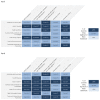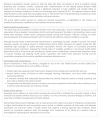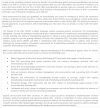Basic newborn care and neonatal resuscitation: a multi-country analysis of health system bottlenecks and potential solutions
- PMID: 26391000
- PMCID: PMC4577863
- DOI: 10.1186/1471-2393-15-S2-S4
Basic newborn care and neonatal resuscitation: a multi-country analysis of health system bottlenecks and potential solutions
Abstract
Background: An estimated two-thirds of the world's 2.7 million newborn deaths could be prevented with quality care at birth and during the postnatal period. Basic Newborn Care (BNC) is part of the solution and includes hygienic birth and newborn care practices including cord care, thermal care, and early and exclusive breastfeeding. Timely provision of resuscitation if needed is also critical to newborn survival. This paper describes health system barriers to BNC and neonatal resuscitation and proposes solutions to scale up evidence-based strategies.
Methods: The maternal and newborn bottleneck analysis tool was applied by 12 countries in Africa and Asia as part of the Every Newborn Action Plan process. Country workshops engaged technical experts to complete the survey tool, which is designed to synthesise and grade health system "bottlenecks" that hinder the scale up of maternal-newborn intervention packages. We used quantitative and qualitative methods to analyse the bottleneck data, combined with literature review, to present priority bottlenecks and actions relevant to different health system building blocks for BNC and neonatal resuscitation.
Results: Eleven of the 12 countries provided grading data. Overall, bottlenecks were graded more severely for resuscitation. The most severely graded bottlenecks for BNC were health workforce (8 of 11 countries), health financing (9 out of 11) and service delivery (7 out of 9); and for neonatal resuscitation, workforce (9 out of 10), essential commodities (9 out of 10) and service delivery (8 out of 10). Country teams from Africa graded bottlenecks overall more severely. Improving workforce performance, availability of essential commodities, and well-integrated health service delivery were the key solutions proposed.
Conclusions: BNC was perceived to have the least health system challenges among the seven maternal and newborn intervention packages assessed. Although neonatal resuscitation bottlenecks were graded more severe than for BNC, similarities particularly in the workforce and service delivery building blocks highlight the inextricable link between the two interventions and the need to equip birth attendants with requisite skills and commodities to assess and care for every newborn. Solutions highlighted by country teams include ensuring more investment to improve workforce performance and distribution, especially numbers of skilled birth attendants, incentives for placement in challenging settings, and skills-based training particularly for neonatal resuscitation.
Figures








References
-
- UN-IGME. Levels and trends in child mortality: Report 2014. New York, USA: UN-Interagency group for child mortality estimation; 2014.
-
- Wang H, Liddell CA, Coates MM, Mooney MD, Levitz CE, Schumacher AE. et al. Global, regional, and national levels of neonatal, infant, and under-5 mortality during 1990-2013: a systematic analysis for the Global Burden of Disease Study 2013. Lancet. 2014;384(9947):957–979. doi: 10.1016/S0140-6736(14)60497-9. - DOI - PMC - PubMed
-
- UNICEF. Progress Report 2014. New York; 2014. Committing to Child Survival: A Promise Renewed.
-
- WHO; UNICEF. Every Newborn: An action plan to end preventable newborn deaths. Geneva: World Health Organization 2014; Available from: http://www.who.int/maternal_child_adolescent/topics/newborn/every-newbor....
-
- Save the Children. Surviving the First Day: State of the World's Mothers 2013. Westport, CT: Save the Children; 2013.
MeSH terms
Grants and funding
LinkOut - more resources
Full Text Sources
Medical

